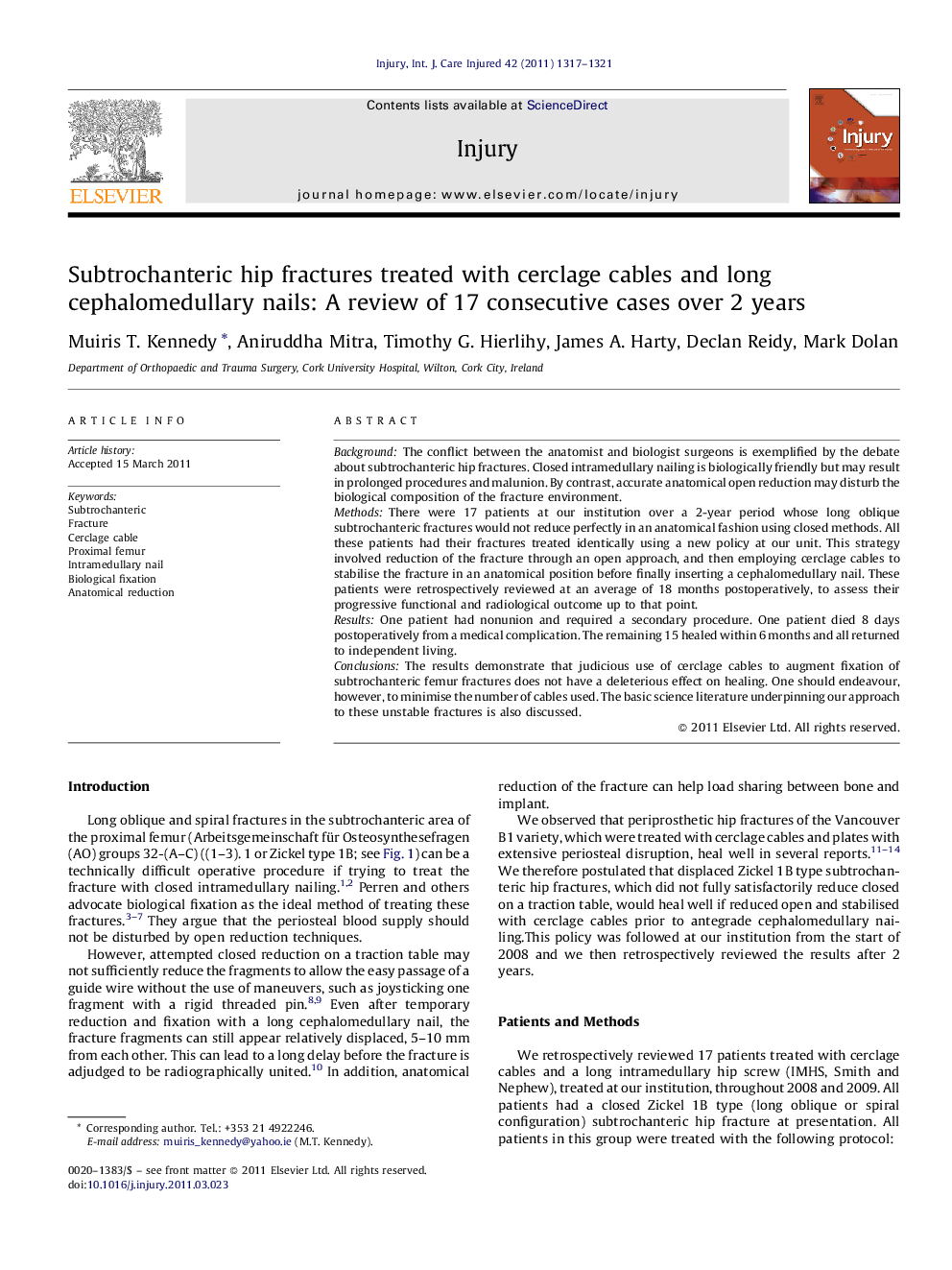| Article ID | Journal | Published Year | Pages | File Type |
|---|---|---|---|---|
| 3239986 | Injury | 2011 | 5 Pages |
BackgroundThe conflict between the anatomist and biologist surgeons is exemplified by the debate about subtrochanteric hip fractures. Closed intramedullary nailing is biologically friendly but may result in prolonged procedures and malunion. By contrast, accurate anatomical open reduction may disturb the biological composition of the fracture environment.MethodsThere were 17 patients at our institution over a 2-year period whose long oblique subtrochanteric fractures would not reduce perfectly in an anatomical fashion using closed methods. All these patients had their fractures treated identically using a new policy at our unit. This strategy involved reduction of the fracture through an open approach, and then employing cerclage cables to stabilise the fracture in an anatomical position before finally inserting a cephalomedullary nail. These patients were retrospectively reviewed at an average of 18 months postoperatively, to assess their progressive functional and radiological outcome up to that point.ResultsOne patient had nonunion and required a secondary procedure. One patient died 8 days postoperatively from a medical complication. The remaining 15 healed within 6 months and all returned to independent living.ConclusionsThe results demonstrate that judicious use of cerclage cables to augment fixation of subtrochanteric femur fractures does not have a deleterious effect on healing. One should endeavour, however, to minimise the number of cables used. The basic science literature underpinning our approach to these unstable fractures is also discussed.
